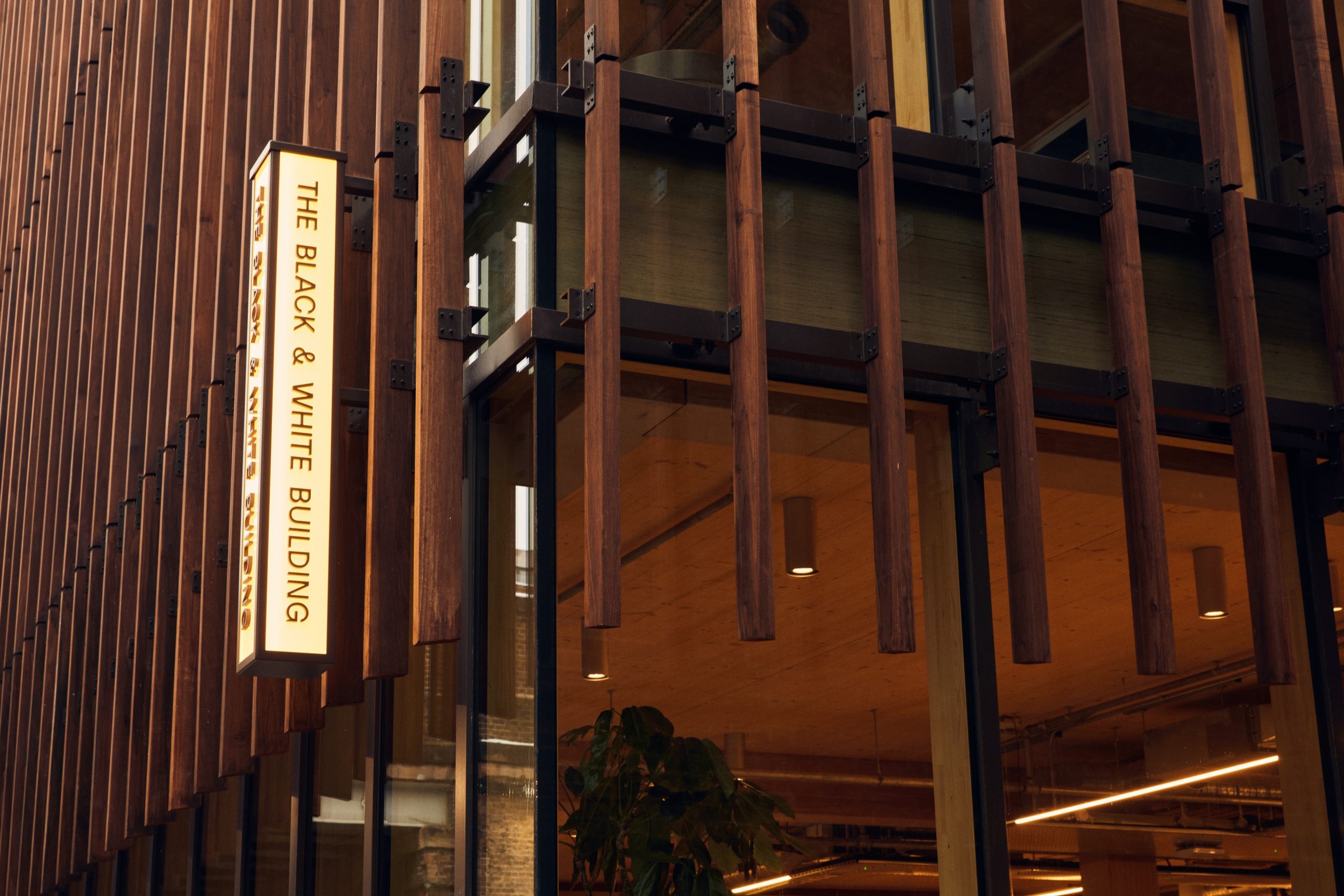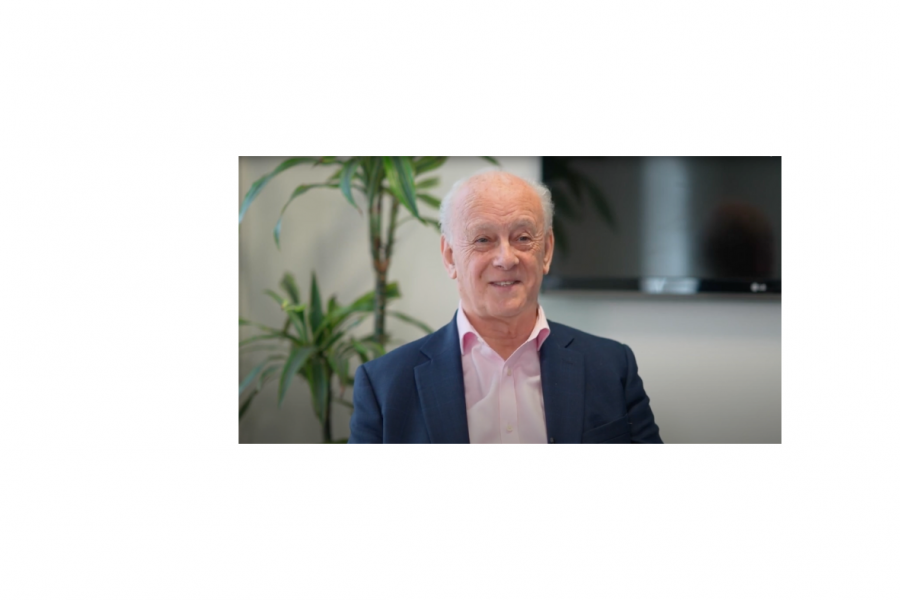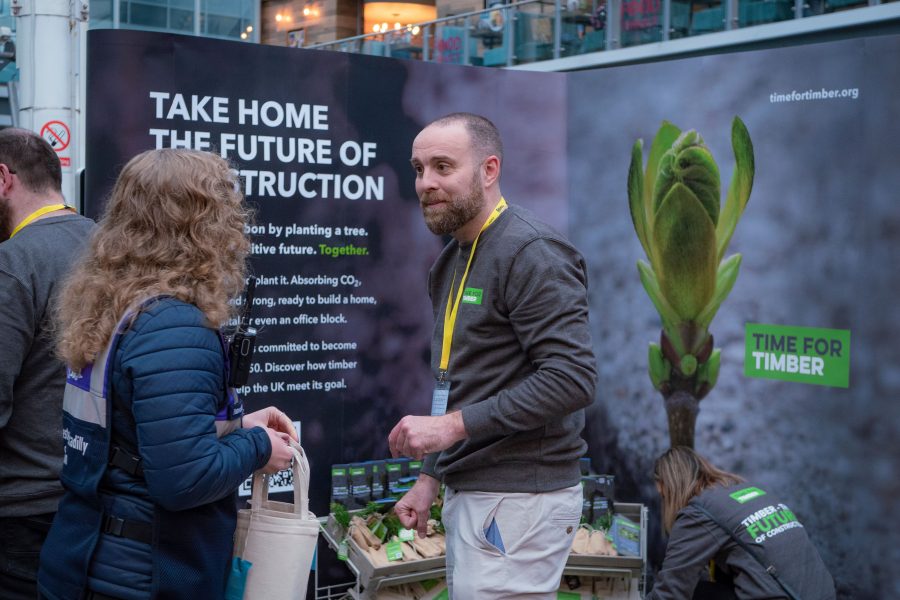Central London’s tallest mass-timber office building, The Black and White Building, is open. Here’s why this design-led workspace specialist is committing to building in timber.
Can you tell us a bit about TOG and The Black and White Building?
I set up TOG (The Office Group) in 2003 with my co-founder Olly Olsen. Our aim, back then and still, is to improve the way people work by providing design-led, high-quality flexible workspaces. We now have 72 buildings in top locations across the UK and Germany, totalling around 3.1m sq ft.
The Black & White Building is our latest development, which, from the ground up, is one of the tallest mass-timber office buildings ever built in central London, comprising just under 40,000 sq ft.
Why is The Black & White Building so important for TOG and sustainable architecture generally?
We’ve always had a strong awareness and commitment to sustainability. Our second building in King’s Cross in 2004 had a green roof, solar panels, greywater recycling and sensor lights. So we committed early and since we’ve focused in sensitively retrofitting and refurbishing, a far more sustainable approach to development than demolition and new build.
For The Black & White Building however, we’ve broken with tradition and chosen to build from scratch. And if we’re going to build new, we had to push boundaries and aim for the most sustainable construction method possible.
In terms of sustainable architecture in the UK, this landmark six-storey mass-timber building represents a proof of concept and demonstrates that timber is the preferable option. It delivers an industry benchmark for sustainable commercial construction.
Our hope is that it will prove you can build better and that it will inspire and encourage the wider development community to adopt carbon-minimal construction methods.
Why did you choose to build from scratch?
The site was previously home to a 10,000 sq ft building that we painted black and white, hence its name. This provided workspace for several small creative businesses in the area, but the fabric of the building was deteriorating and not fit for purpose. At the same time, we had a waiting list for our offices from the local market, so it made sense to provide something better and bigger to meet that local demand.
We had inherited a planning consent for a conventional scheme that just did not seem appropriate for the area or the audience. We know Shoreditch, this street and the community, having worked opposite this site for years at our head office. So we believe we have a strong sense of what will work for people who want to be in Shoreditch.
Who were your project partners?
Created using renewable materials and highly innovative construction methods, the building was constructed in partnership with sustainable design experts Waugh Thistleton Architects. We met Andrew Waugh when I was on a panel at a conference with him, discussing sustainability. We connected and his passion for building in timber was infectious. Andrew has also lived and worked in Hackney for 30 years, so we felt this added another layer of authenticity to our approach.

What role does structural timber play in the building’s design and construction?
There are timber buildings in London but most have a traditional steel frame and concrete core. Here, everything above ground is timber.
I became convinced of the benefits of using timber, both environmentally and for those who would use the workspace. Once we saw it was possible and understood the advantages over traditional construction, The Black & White Building was an ideal opportunity to champion timber construction throughout.
We turned to cross-laminated timber (CLT) and laminated veneer lumber (LVL) – high-performance wooden materials that are rapidly renewable, highly durable, easily recyclable and less waste-generating than more common building materials such as iron, steel and cement.
What environmental credentials does structural timber bring?
The Black & White Building creates 37% less embodied carbon than a comparable concrete structure, and serves as a long-term carbon store for 1,014.7 tonnes of CO2 equivalent (55% of the building’s total) in the timber structure.
A total of 1,774 trees have been used to make the core structure – a combination of beech (227 trees) and pine and spruce (1,547), harvested from certified, sustainable forests in Austria and Germany. For a sustainable forest to regenerate the quantity of wood used in the construction of The Black & White Building would take 137 minutes – in other words, you can grow enough to construct a building in less time than it takes to bake a loaf of bread!
Does using structural timber offer any other benefits?
Yes absolutely. It means we can build cleanly and quickly, with the timber components engineered to slot together. The Black & White Building took 14 weeks to assemble the wood section compared with 37 weeks for traditional methods. What’s more, the timber can be taken apart and reused, closing the circular loop.
CLT is also significantly lighter and easier to transport than conventional building materials such as concrete and steel, which means that fewer deliveries are required to bring the necessary quantities to the construction site. This not only represents a carbon-reduction in terms of logistics, it also makes building in dense urban areas a more efficient, less disruptive process.
What role does timber have in the design of offices in the future?
It’s visually beautiful, yes, but beautiful also in what it contributes to the future of construction, showing the industry that building in a more sustainable way can and should be done. It will help businesses support their ESG and sustainability agenda too.
It has never been more important to develop techniques and approaches that deliver buildings for a better world. Innovative construction processes and sustainable materials, like those employed at The Black & White Building will form a central part of the sector’s journey to net zero over the coming years.



